

Josh Nevett
2025 Bentley Bentayga review
4 Days Ago
Ford needs the Puma to be good. It's even better than that, with the dynamic sparkle to match its handsome looks and stacked spec sheet.
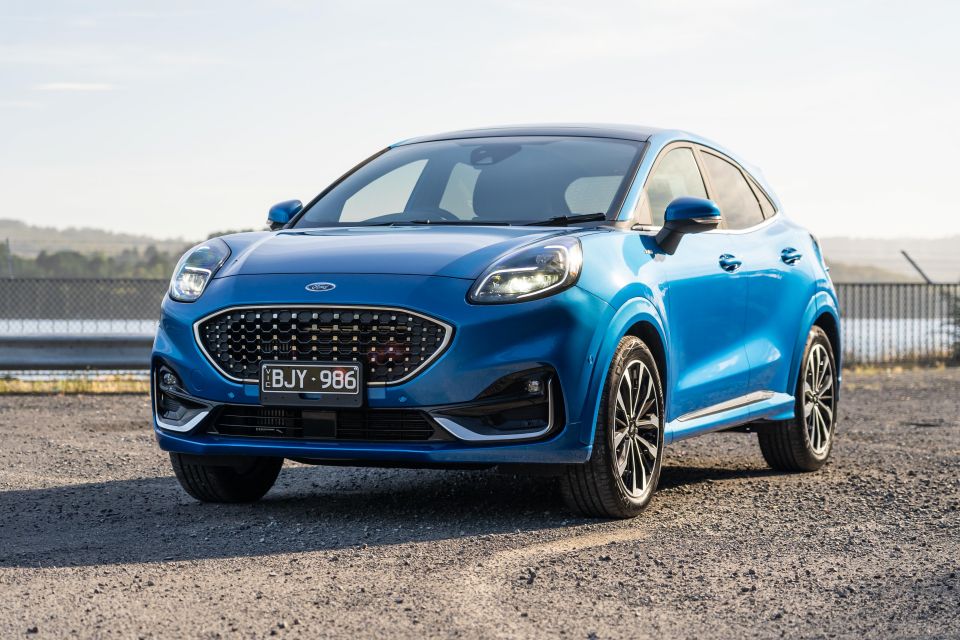
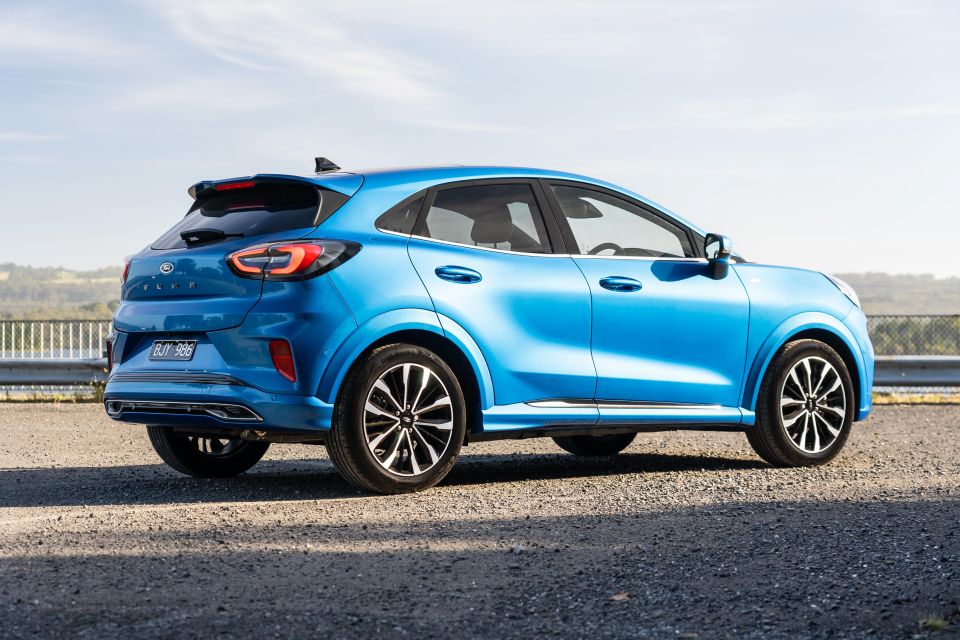

Contributor
New from
$29,990
excl. on-roads

Contributor
New from
$29,990
excl. on-roads


Contributor
New from
$29,990
excl. on-roads

Contributor
New from
$29,990
excl. on-roads
Quickly see how this car stacks up against its competition. Select any benchmark to see more details.
Where expert car reviews meet expert car buying – CarExpert gives you trusted advice, personalised service and real savings on your next new car.
To say the Puma is a big deal for Ford Australia would be a massive understatement.
Although its sales are strong, the Blue Oval is heavily reliant on the Ranger ute, and hasn’t ever really cashed in on Australia’s love affair with compact and mid-sized SUVs.
That’s where the handsome little beast you see here steps in. Based on the Fiesta hatchback, the Puma is designed to succeed where the unloved EcoSport failed and give the Nissan Juke, Volkswagen T-Cross, and Skoda Kamiq some sleepless nights.
It’s an appealing crossover on paper. The name evokes memories of a Euro sports coupe from the late ’90s but the body borrows more from the Porsche Macan (and Kermit) than Ford’s back catalogue, while the lavish equipment list in our range-topping tester points to a focus on city dwellers heavy on cash but light on garage space.
Can the range-topping Puma succeed where the EcoSport didn’t, and make the Ford badge appealing to stylish urbanites?

Pricing for the Puma kicks off at $29,990 before on-road costs ($31,990 drive-away), runs through the Puma ST-Line at $32,340 before on-roads ($33,990 drive-away), and tops out with the ST-Line V on test here.
Although list price is $34,540 before on-road costs, it’s currently being offered at $36,990 drive-away nationwide.
There are some options at the top of the range, however. Our car featured the Park Pack ($1500) which brings adaptive cruise and stop/go, lane-centring assist, active parking assist with sensors, and blind-spot monitoring, along prestige paint ($650) and a panoramic sunroof ($2000).
All told, you’ll be out the dealership door for $41,140 on the road. Not cheap, given this is a Fiesta-based crossover, but certainly not crazy pricing given what rivals will set you back.
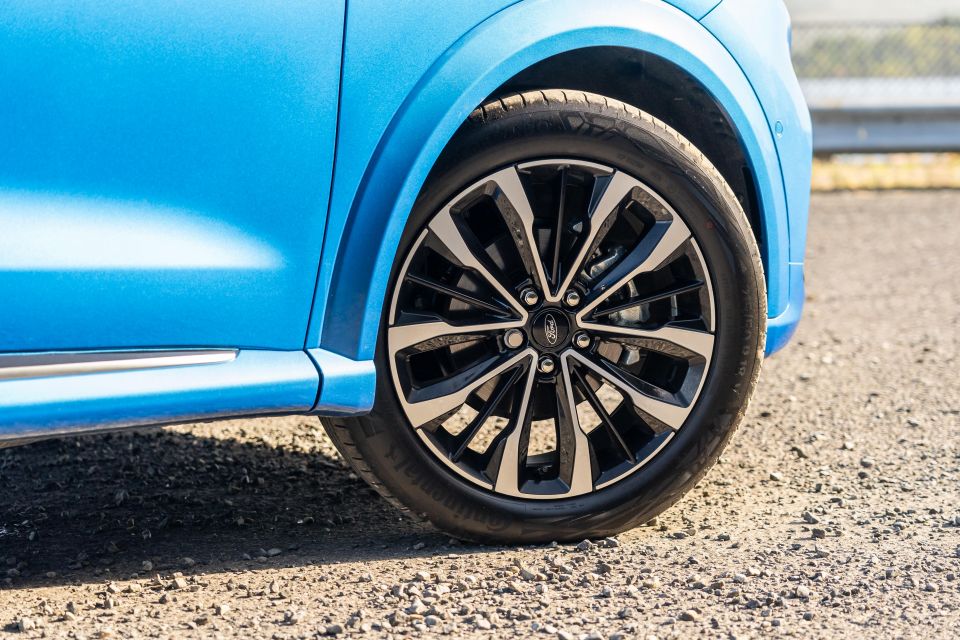
Fellow semi-premium-spec crossover runabouts include the Mazda CX-3 Akari, Nissan Juke Ti, Toyota Yaris Cross Urban, Volkswagen T-Cross 85TSI Style, Hyundai Kona N-Line, and Skoda Kamiq Monte Carlo.
If it’s available, it’s on the range-topping Puma. Although it’s related to the Fiesta, a lot of effort has gone into making the Puma feel like a convincing high-end crossover.
Regardless of trim, the Puma gets automatic LED headlights with daytime running lights and high-beam assist, along with funky LED tail lights.
Infotainment comes courtesy of an 8.0-inch Sync 3 touchscreen with Apple CarPlay and Android Auto, backed by factory satellite navigation, DAB+ digital radio, and Bluetooth phone/audio streaming. There’s two USB ports and a wireless phone charger at the base of the centre console.
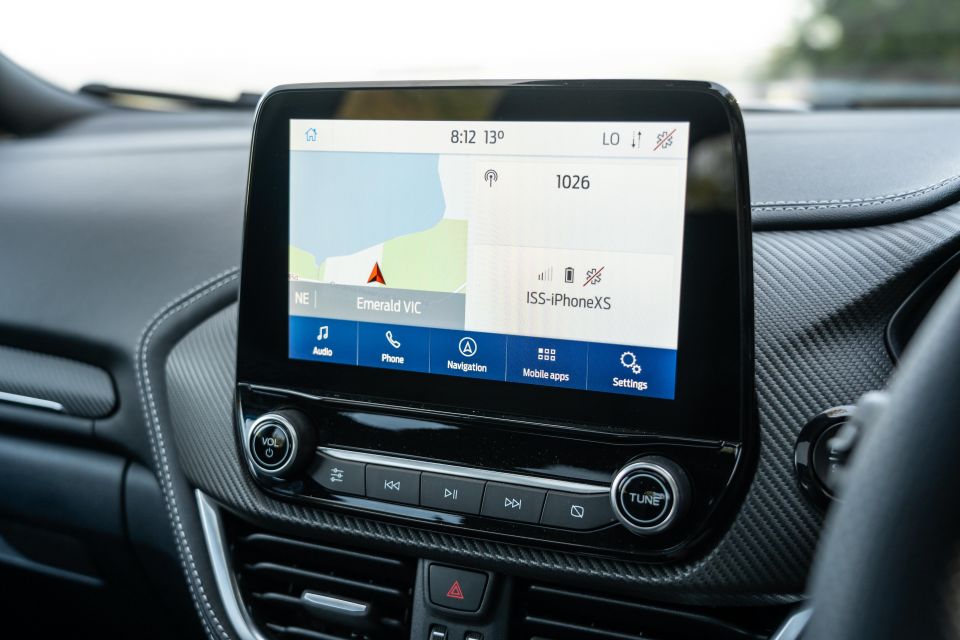
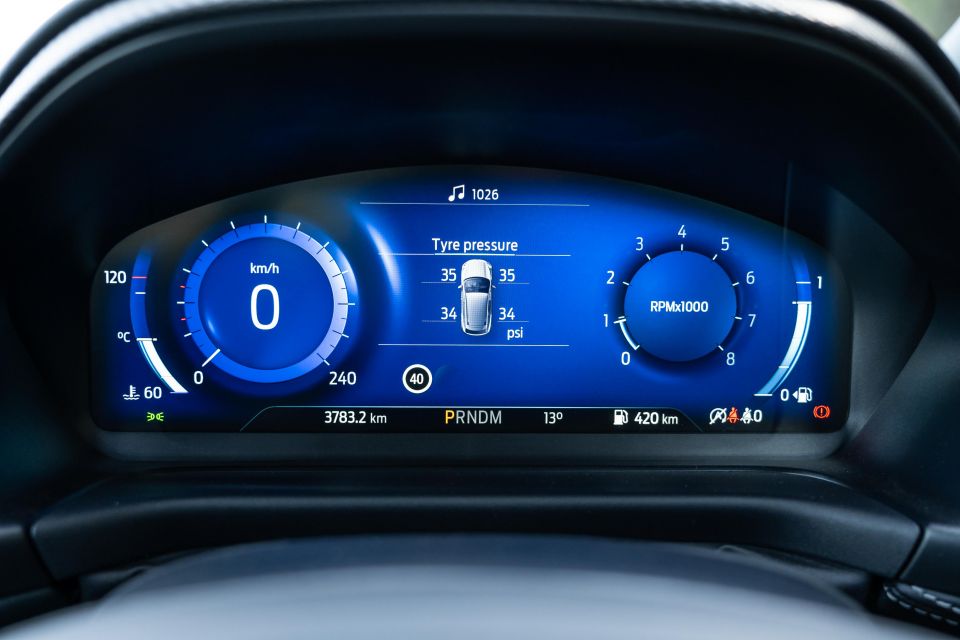
The FordPass Connect system, which allows owners to remotely check their fuel levels, unlock their vehicle, and start the climate control from their phone, is also standard.
Safety kit includes a reversing camera, autonomous emergency braking, lane-departure warning with lane-keeping assist, and tyre-pressure monitoring.
Making the leap to the ST-Line V gets you 18-inch alloy wheels and chrome exterior highlights, privacy glass, keyless entry and start, quilted leather seats with grey top-stitching, automatic climate control, a powered tailgate, and a 10-speaker sound system.
It also gets you a 12.3-inch digital instrument cluster, which replaces the more basic analogue dials from the base Puma.

The Puma has a five-star ANCAP safety rating based on Euro NCAP testing carried out in 2019.
The little SUV scored 94 per cent for adult occupant protection, 84 per cent for child occupant protection, 77 per cent for vulnerable road users, and 74 per cent for safety assist.
Locally, the entire range features the following safety kit:
The Park Pack ($1500) fitted to our tester adds:

The Puma’s connection to the Fiesta is clear inside, albeit dressed up to feel significantly fancier than its budget brother.
Plenty of effort has been put into making the materials and design interesting, although there are some hard and scratchy spots if you go looking.
The quilted leather-trimmed seats look classy and are impressively supportive, while the chubby little steering wheel plays into the sporty ST-Line badging applied to all but the base Puma.
Throw in some interesting door trims, the squidgy dashboard finish, and the contrast stitching, and there’s no doubt the top-spec Puma is a sharp looker inside.
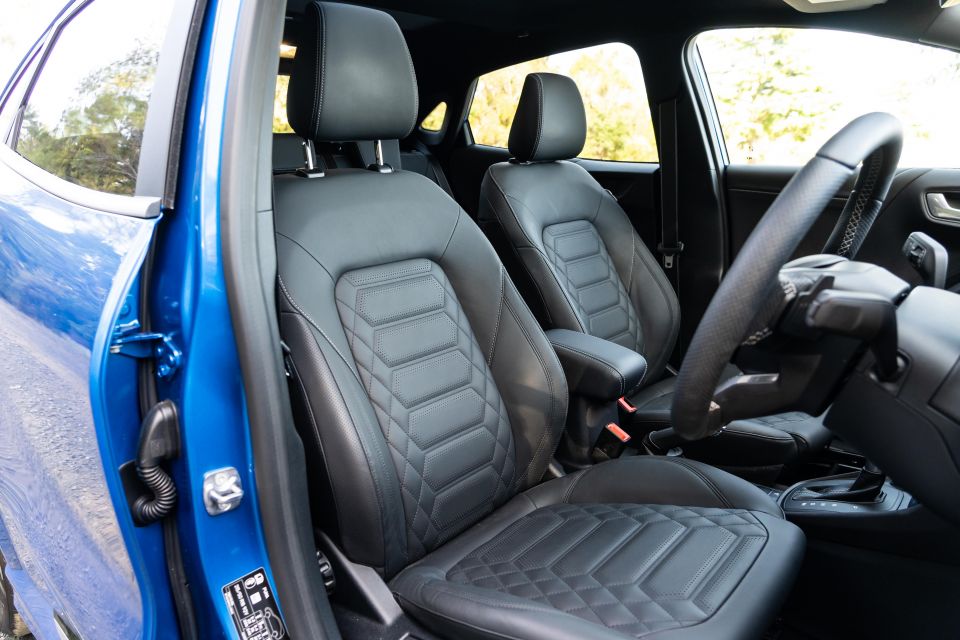
Real thought has gone into the touch points, as evidenced by the rubber-ringed dials, although the door grab handles are evidence of the Puma’s humble origins.
It’s a shame the driving position is so poor, then. Like in the Escape, the seat in the Puma is set way too high. Some SUV drivers want a commanding view of the road ahead, sure, but there’s no excuse for forcing the driver to sit with their head in the clouds.
The sunroof fitted to our tester was no doubt part of the problem. Otherwise, there’s plenty of legroom in the front for leggy drivers, and the seats have plenty of bolstering for when you’re feeling a bit racy.
There are a few other ergonomic quirks. The manual handbrake obscures one of the storage spaces on the transmission tunnel and the tunnel itself is very narrow, which means broad-shouldered drivers and passengers will feel like they’re sitting on top of each other.

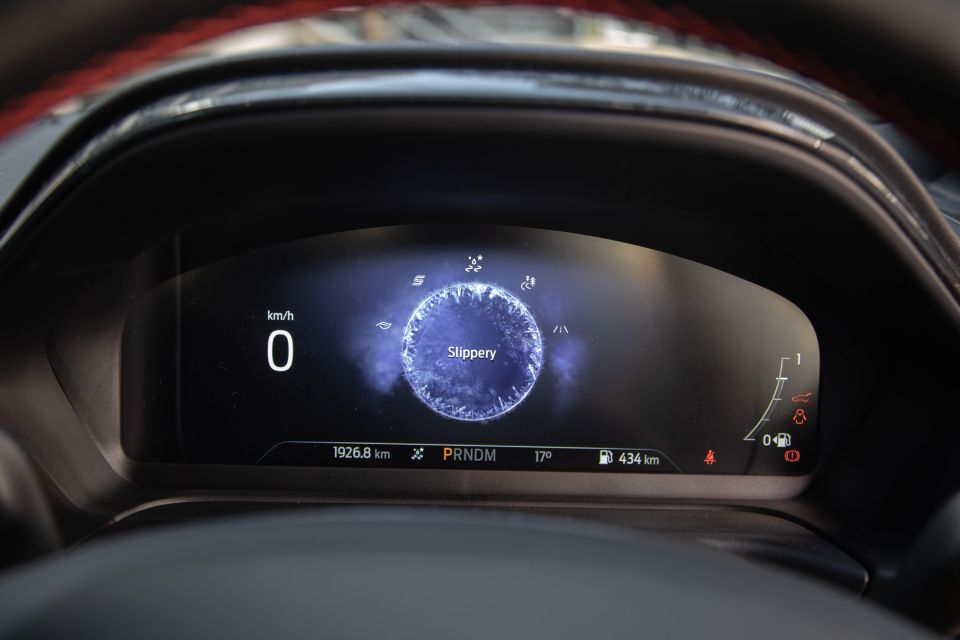
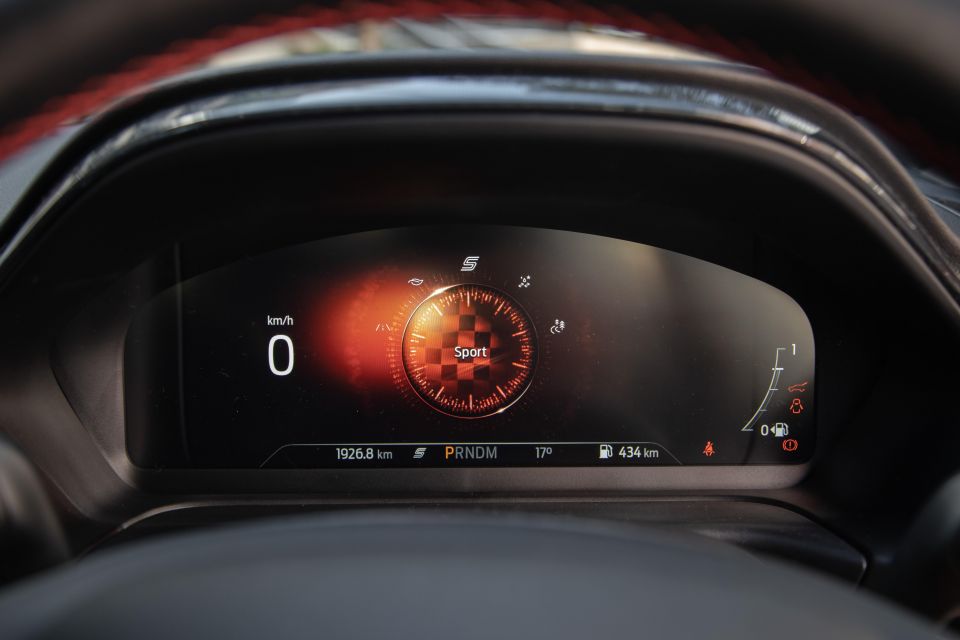
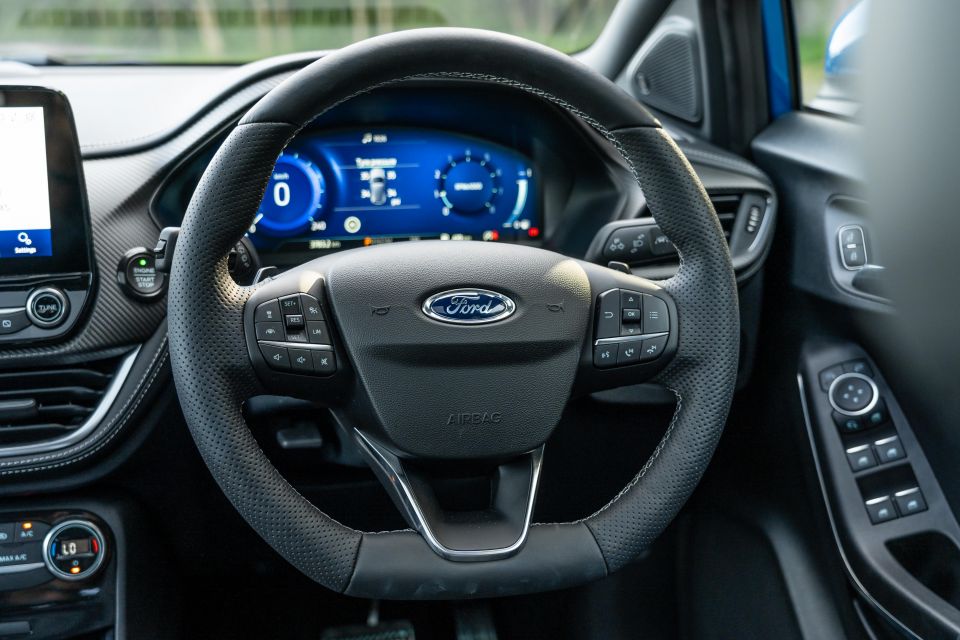
Ford has nailed the technology, as it tends to do. Sync 3 isn’t the flashiest infotainment system in the world, but it’s among the easiest to use. Everything is within easy reach, and its responses are sharp enough to feel natural for even the most dedicated smartphone users.
Apple CarPlay looks great on the 8.0-inch display, and didn’t drop out or falter during our time behind the wheel. Extra points go to Ford for making it easy to turn the screen off – there’s a hard button below the display, which is as clever as it is rare.
Also excellent is the 12.3-inch digital instrument cluster, which puts a distinctly Ford-ish spin on the formula pioneered (and nailed) by the Volkswagen Group. The graphics are sharp but simple, which is ideal when you’re after information in a hurry, and the animations when you swap between drive modes are impressively polished.
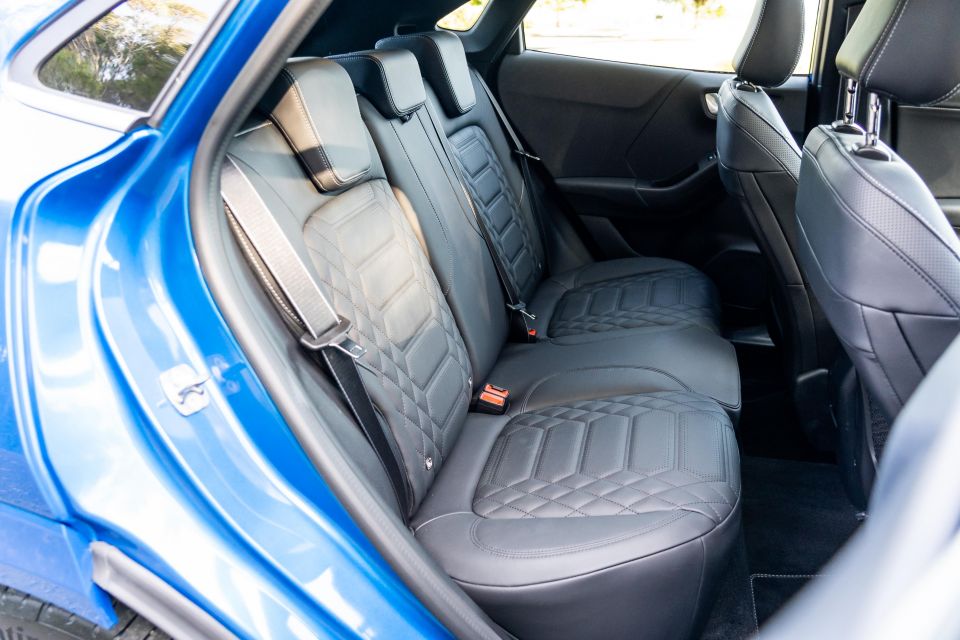
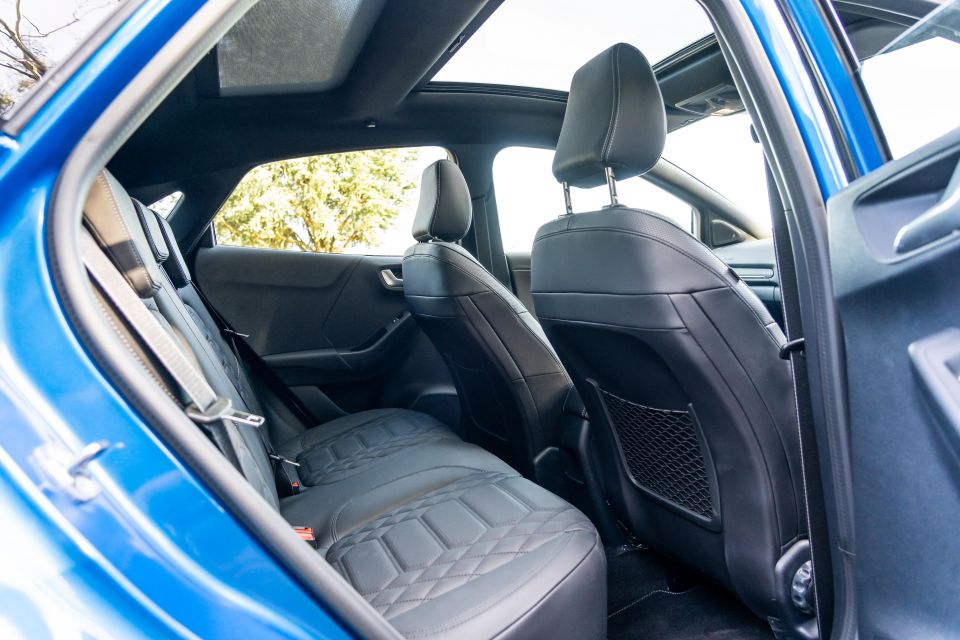
The rear seats feel like a bit of an afterthought compared to the lavish accomodation up front. Legroom behind a tall-ish driver is laughably bad, and headroom will be a problem for anyone but children back there thanks again to the optional panoramic sunroof.
Bundle in the fact there’s no rear air vents, no fold-down armrest, and little in the way of padding on the door trims, and it’s clear the Puma’s rear quarters are best reserved for little kids or adults you really don’t like.
The sunroof compounds things – not only because of its impact on headroom, but because the manual sliding shade doesn’t feel up to the task of keeping out the scalding Australian sun.
Save the $2000 and spend it on a beach holiday if fun in the sun is what you’re after.
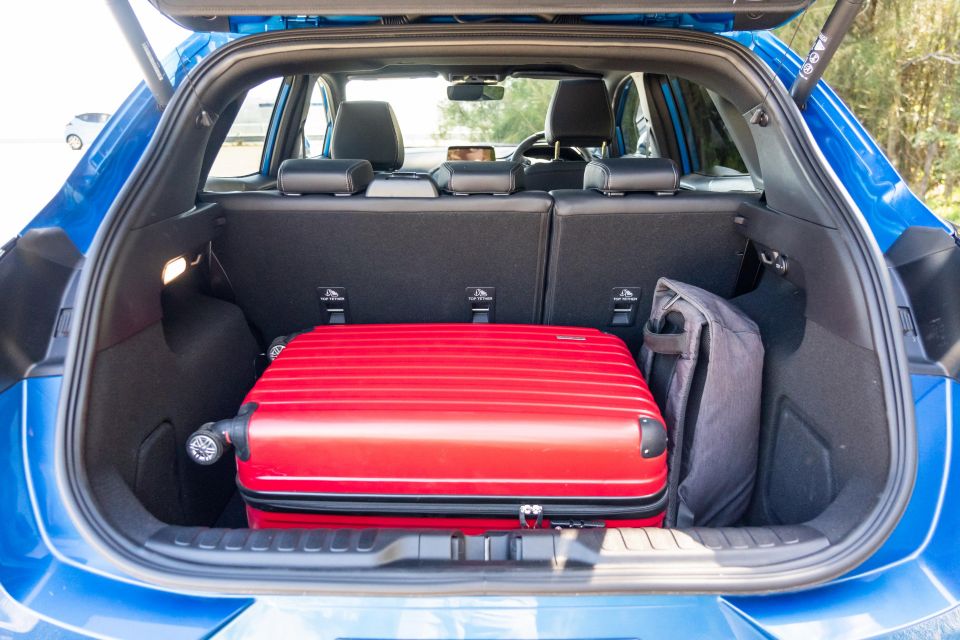
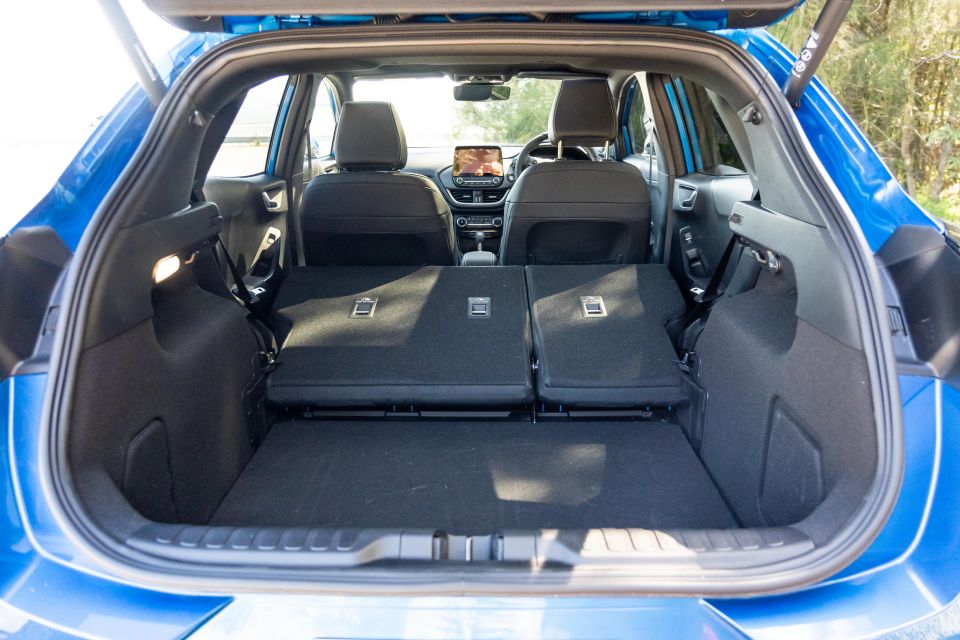
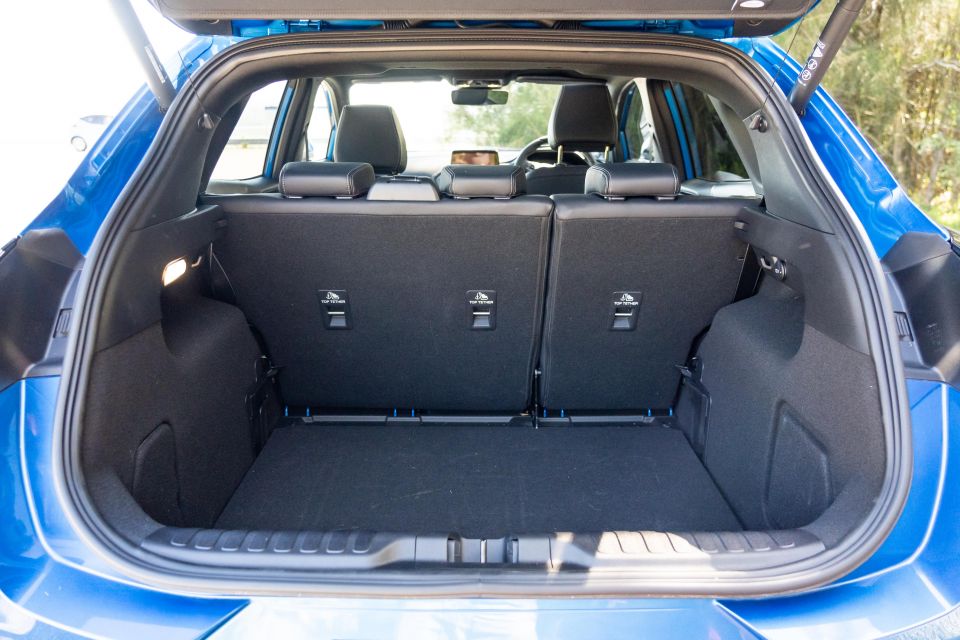
Boot space is surprisingly good. The load area is deep and wide, with a claimed 376L of space with the rear seats in place, and another 34L in the plastic bin beneath the false floor but above the space saver spare.
It’s not quite as capacious as the MegaBox offered overseas, but still leaves somewhere to store bathers or sweaty workout clothes without sullying the carpeted boot floor.
Given Ford Australia had the choice between the deeper under-floor storage space or adding a space saver spare tyre, we’re glad it opted for the latter. Folding the rear bench frees up 1170L of space.
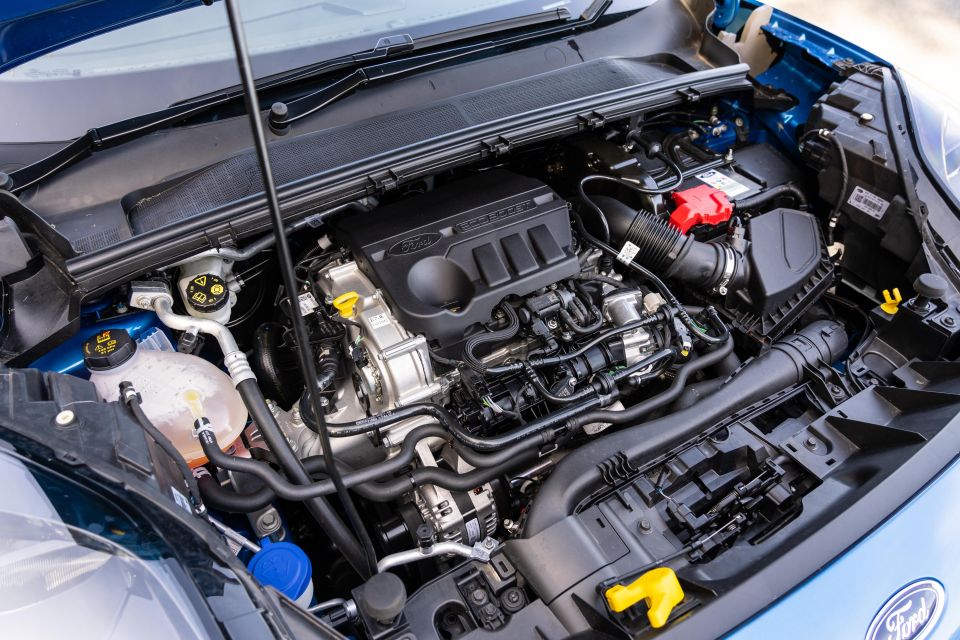
Australia misses out on the headline-grabbing Puma ST and mild-hybrid options offered in Europe, but the 1.0-litre turbocharged petrol engine standard range-wide locally is still a peach.
It’s a three-cylinder unit part of the EcoBoost family, and pumps out 92kW of power and 170Nm of torque. Those figures aren’t what you’d call standout, but the way they’re delivered more than makes up for it.
There’s no all-wheel drive option in Australia, and a seven-speed dual-clutch transmission is standard across the range.
Claimed fuel economy is 5.3L/100km on the combined cycle, we saw 7.1L/100km on a week heavily skewed to city life.
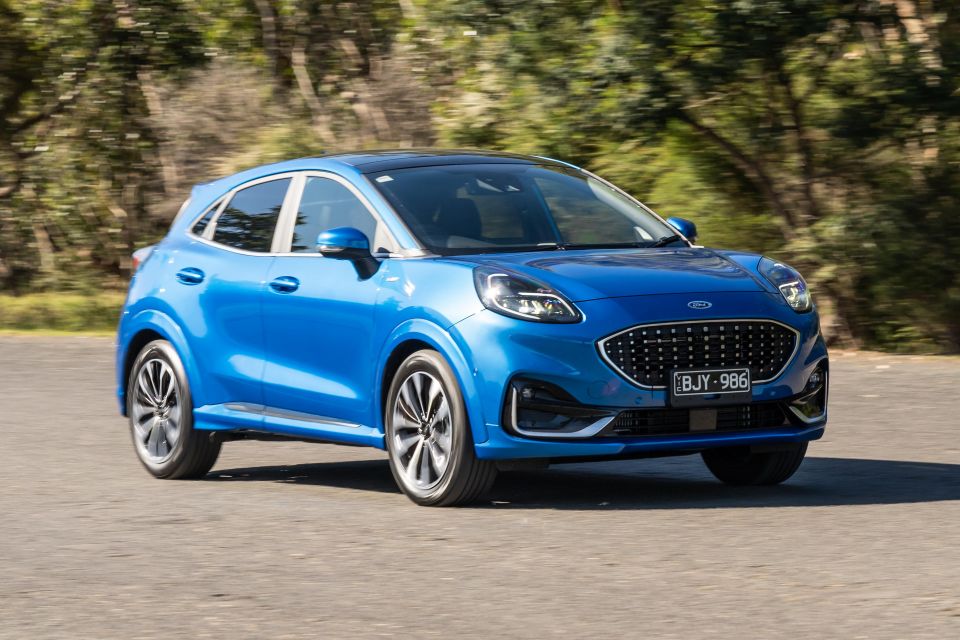
Compact SUVs are often written off as shopping trolleys on stilts, cars for people who don’t care about driving. Luckily, no-one told Ford.
The Puma is a honey on the open road, simple as that. For starters the engine is determined and charming, with bags of torque off the line backed by a warm, thrummy sound in the cabin.
It shoots off the mark quickly and pulls hard through the closely-stacked gears at city speeds, never dropping out of the sweet spot between 1500rpm and 4500rpm, although it will also rev happily out to redline if the driver welds their foot to the firewall.
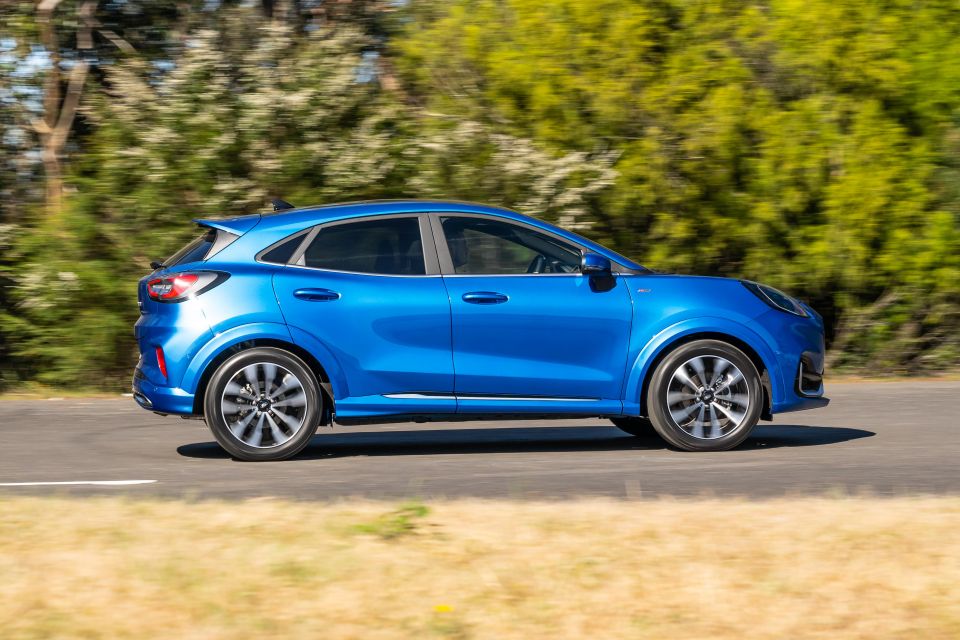
The seven-speed dual-clutch transmission is one of the best, to the point where it could be confused for a torque converter in most situations. Shifts on the move are dispatched without fuss, and it doesn’t exhibit the low-speed jitters that sometimes afflict small-engined cars with dual-clutch ‘boxes.
It can be slow to swap between drive and reverse, however, which makes three-point turns slightly slower than they really need to be.
The willing engine is backed by a lively chassis that’s talented beyond what most owners will ever demand. With direct steering and plenty of front axle grip, it can be flung into corners like an oversized hot hatch, and there’s a brilliant sense of balance once the car is settled on its outside front tyre.
Sure, it doesn’t quite feel as alive as a Fiesta ST, but it’s adjustable and enjoyable in a way its rivals just aren’t. Ford, bring the Puma ST to Australia. If the regular car is this good, the proper ST much be an absolute laugh.
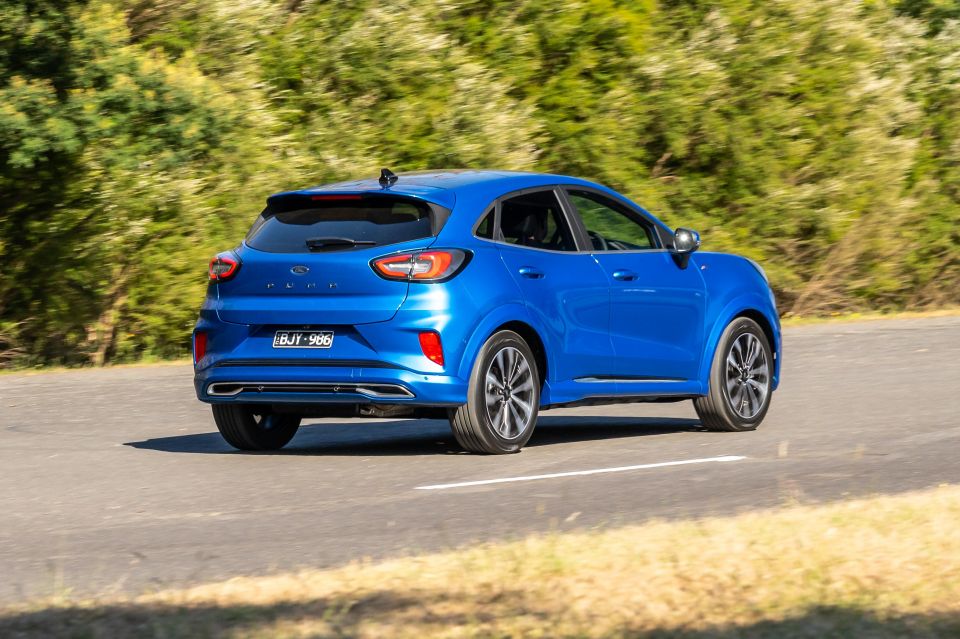
Where expert car reviews meet expert car buying – CarExpert gives you trusted advice, personalised service and real savings on your next new car.
The top-spec Puma’s talent on the open road hasn’t come at the cost of refinement. The ride is Euro-firm but never crashy, and the steering is light enough to make reverse parking a breeze.
There’s a decent blind spot over the driver’s shoulder, but the array of cameras, sensors, and driver aids on hand helps make up for it. The engine is equal parts smooth and quiet when you’re cruising, and road noise is well suppressed on smooth tarmac. It can be a bit noisy on coarse chip gravel, though, as is common in European hatchbacks and crossovers.
The only real knock on its highway refinement is the slightly overbearing lane-centring system, which is too keen to take charge in a straight line and too easily flummoxed when it gets curvy. Thankfully it can be turned off with a button on the steering wheel.
Ford backs the Puma with a five-year, unlimited-kilometre warranty that’s in keeping with most of its mainstream rivals.
Maintenance is required every 12 months or 15,000km and the first four visits are capped at $299 each.
Bear in mind, the Puma demands 95 RON premium unleaded so it’s going to be slightly more expensive to run than rivals with naturally-aspirated engines.
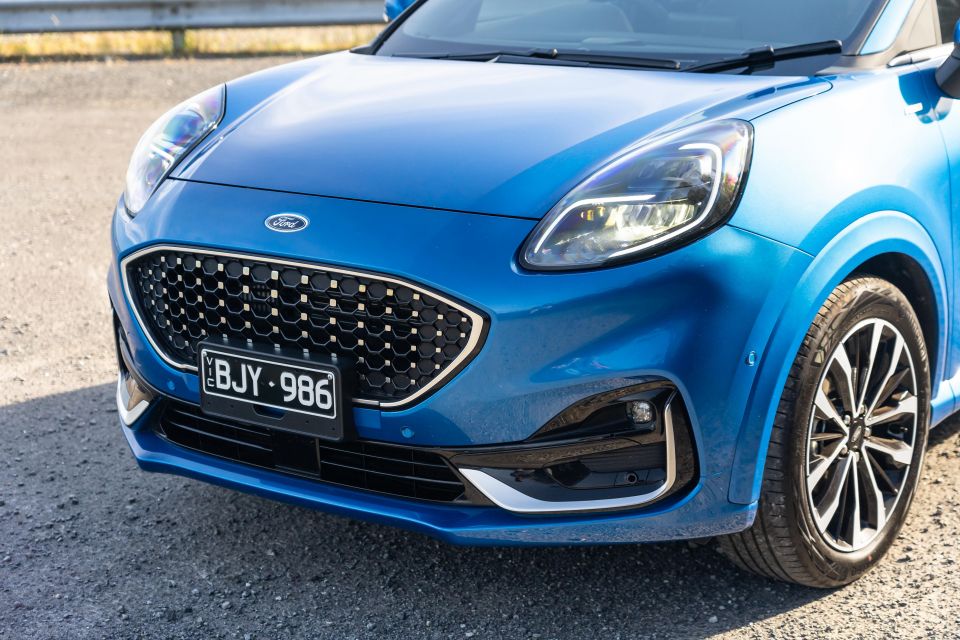
The Puma is a charming little beast. It’s way more dynamically capable than it needs to be, handsome on the outside, and generously equipped on the inside.
It’s expensive, but the Puma is far from alone in stretching fairly humble underpinnings to the $40,000 mark. We’d suggest steering clear of the panoramic sunroof, which will save you some cash and improve the cabin in the process.
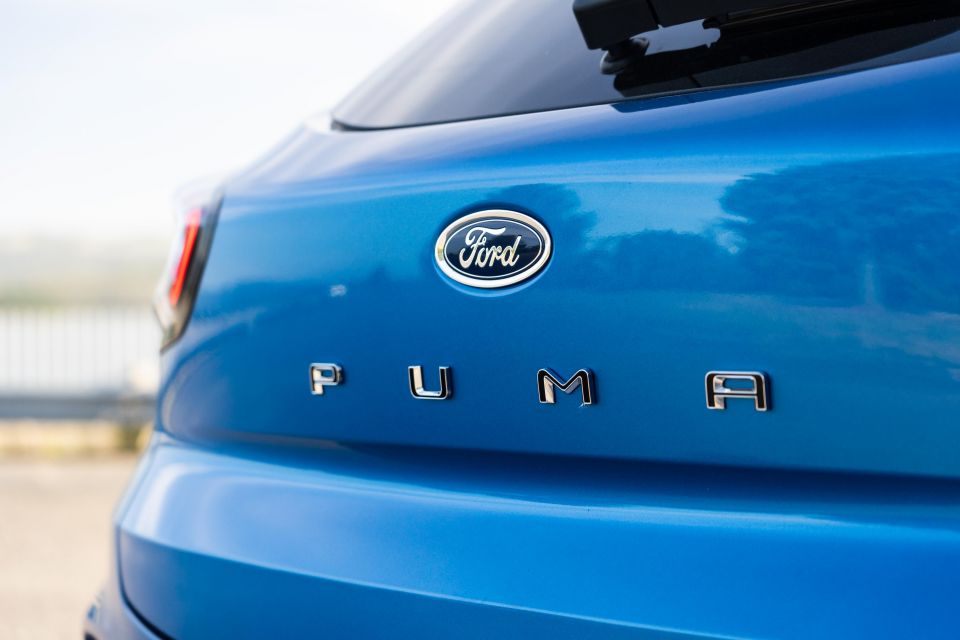
If you can forego some of the exterior flash, the ST-Line will save you $3000 and offers the same dynamic goodness.
But for the people Ford is targeting, up against its similarly-priced rivals, the ST-Line V is pretty much perfect.
Click on the images for the full gallery
MORE: Ford Puma news and reviews MORE: Ford news and reviews
Where expert car reviews meet expert car buying – CarExpert gives you trusted advice, personalised service and real savings on your next new car.
Scott Collie is an automotive journalist based in Melbourne, Australia. Scott studied journalism at RMIT University and, after a lifelong obsession with everything automotive, started covering the car industry shortly afterwards. He has a passion for travel, and is an avid Melbourne Demons supporter.


Josh Nevett
4 Days Ago


Andrew Maclean
4 Days Ago


Shane O'Donoghue
3 Days Ago


Anthony Crawford
2 Days Ago
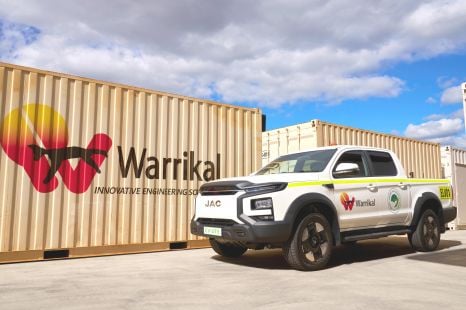

William Stopford
2 Days Ago


Matt Campbell
1 Day Ago